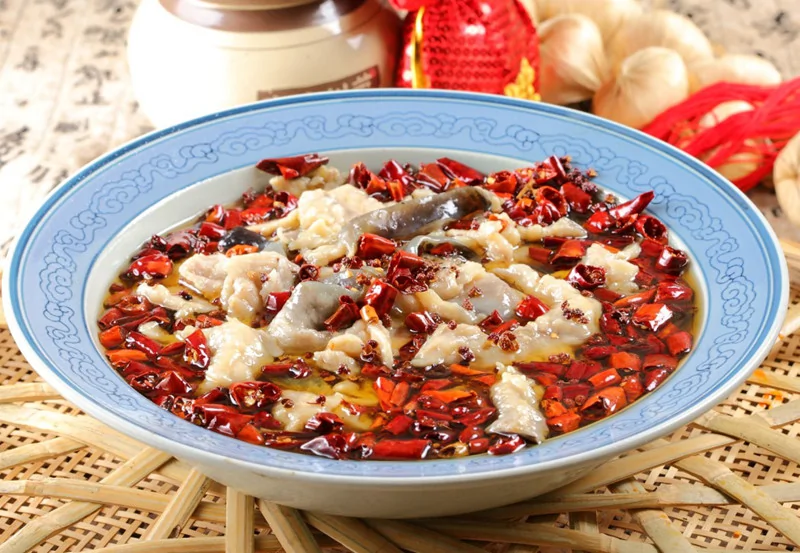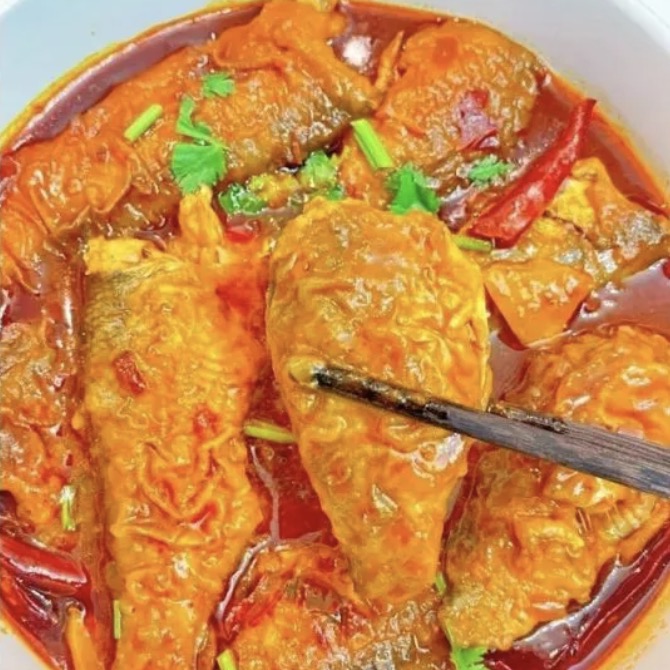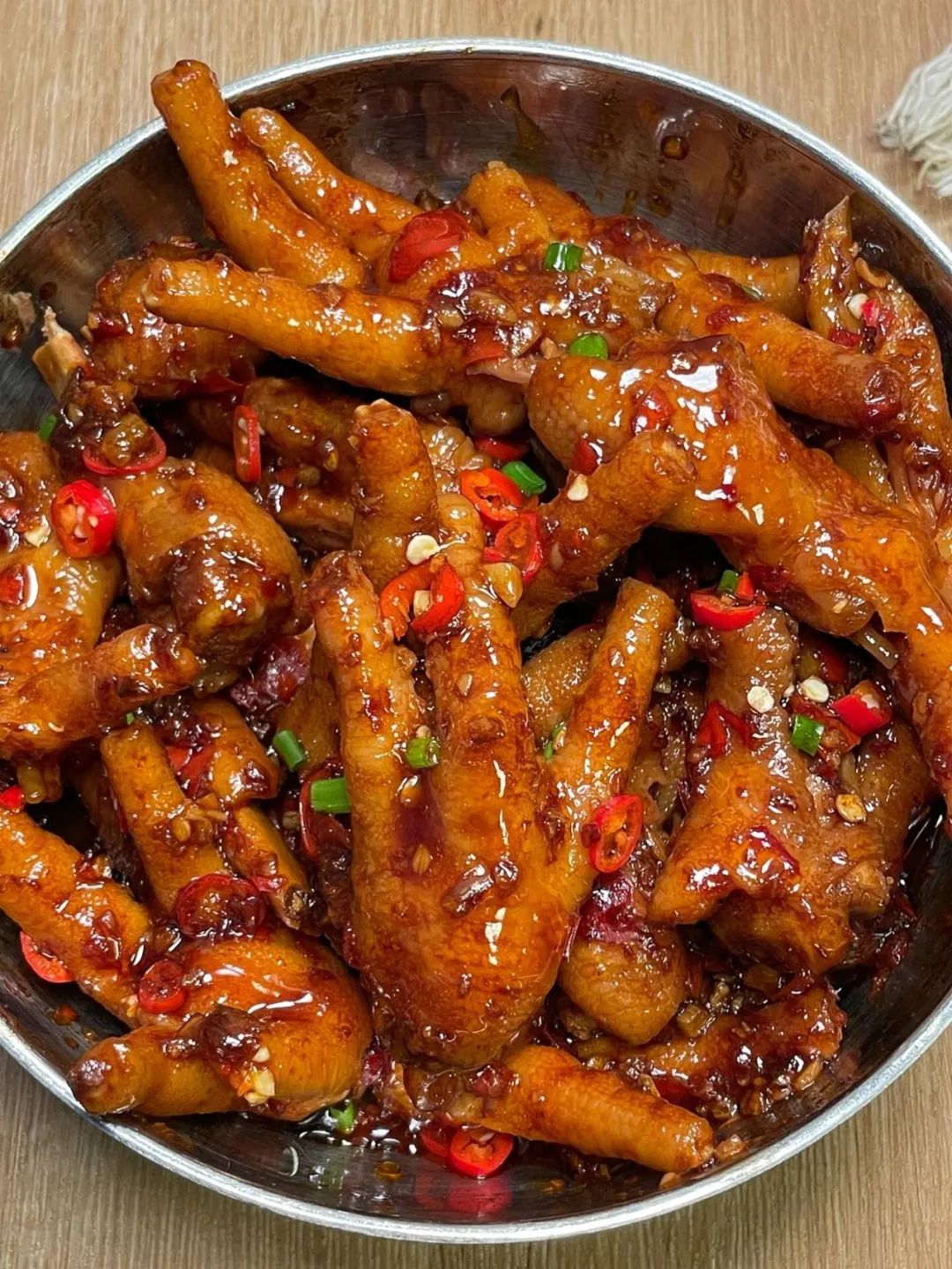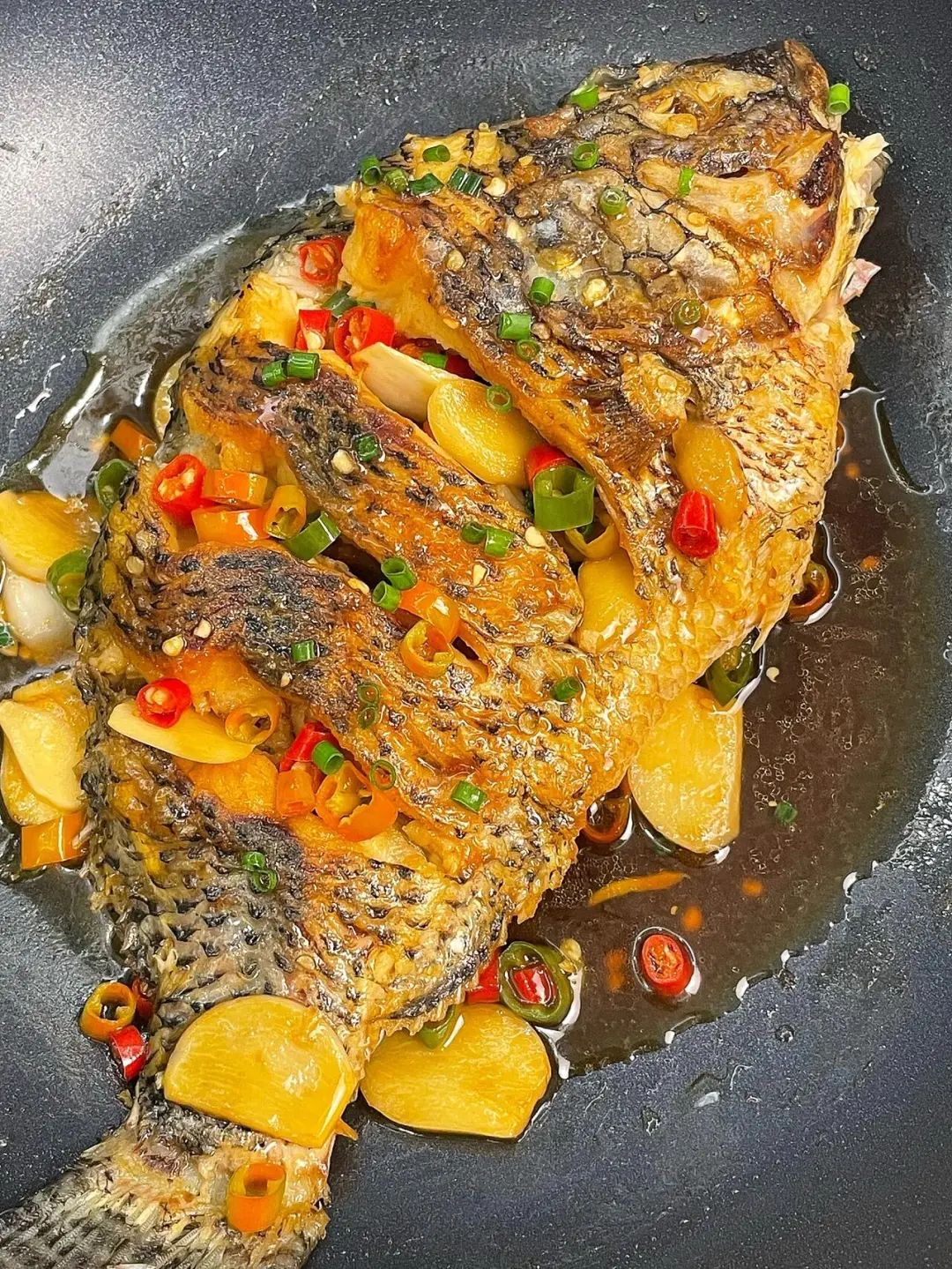Chinese cuisine
How to make Chinese cuisine
The most important aspect of preparing Chinese cuisine is mastering the delicate balance of flavors, textures, and seasonings to create a dish that is both harmonious and diverse.

Discover Sichuan cuisine preparation
We offer delicious, easy-to-follow Sichuan cuisine recipes that anyone can make!

Steamed yellow croaker with ginger and scallions is a light, flavorful seafood dish. The fish is gently steamed, topped with a savory soy-based sauce, fresh scallions, and finished with hot oil for a fragrant, restaurant-style finish—all ready in under 20 minutes!

These 8 New Year’s Eve dishes offer a festive mix of sweet, savory, and tangy flavors. From the refreshing Pickled Plum Tomatoes to the hearty Corn Chicken Wings Casserole, each dish combines fresh ingredients and bold seasonings, creating a flavorful and satisfying spread to celebrate the occasion.

These three dishes offer a mix of savory and crispy flavors: Red-Braised Carp with a rich soy sauce, Pan-Seared Pomfret with a sweet-savory glaze, and Salt and Pepper Fried Fish for a crispy, flavorful snack. Perfect for a festive meal.

These two dishes feature flavorful fish preparations: Grilled Fish with Spicy Sauce combines grilled fish with a spicy, aromatic sauce and vegetables, while Pan-Seared Fish with Fish Tofu Stew offers tender fish in a fragrant broth with fish tofu and a tangy vinegar finish. Both are comforting and delicious.

This stir-fried meat dish is quick, easy, and packed with flavor. Begin by sautéing thinly sliced meat in hot oil until cooked through. Add aromatic green onions and garlic, followed by vibrant carrots and wood ear mushrooms. Combine everything with green bell peppers and a savory sauce for a delicious finish. This dish is not only colorful but also a delightful blend of textures and tastes, making it perfect for any meal. Enjoy your culinary adventure!

Get ready to enjoy a delightful chicken egg dish that’s bursting with flavor! This recipe features fluffy scrambled eggs enveloped in a savory sauce crafted from soy sauce, aged vinegar, and a hint of chili powder. Start by creating your sauce and cooking the eggs until they’re perfectly tender. Combine everything and let the flavors come together over high heat. Finish with a sprinkle of fresh green onions for that perfect pop! This dish is quick to prepare and makes for an excellent meal or side that everyone will love!

This spicy pepper stir-fry is a vibrant and flavorful dish that is quick to prepare. With fresh green peppers sautéed until blistered, combined with minced garlic and a savory sauce, it packs a punch! The dish is perfect as a side or served over rice or noodles for a complete meal. Simple yet delicious, this recipe is sure to impress anyone looking for a tasty and satisfying option. Get ready to enjoy your culinary adventure!

Hey cooking enthusiasts! This stir-fried fresh squid dish is a quick and delicious option for your next meal. Start by cleaning and blanching squid before stir-frying with ginger, garlic, and colorful chilies. Add flavor with doubanjiang, soy sauce, and oyster sauce, then toss in some onions and garlic chives. It’s a vibrant, satisfying dish that’s ready in no time! Perfect for those who crave seafood with a kick. Happy cooking!
Tips for making Sichuan cuisine
Spicy and hot
Spicy and hot is the core of Sichuan cuisine, and the balance between peppercorns and chilies is crucial.
The selection and use of seasonings
Ingredients like bean paste, soy sauce, vinegar, and sugar are crucial, as their combination enhances the overall flavor of the dishes.
Heat control is the key to Sichuan cuisine
Hot pan and cold oil, stir-frying, and fast heat lock in the freshness of ingredients.
A variety of cooking techniques
Methods like stir-frying, braising, and dry stir-frying are chosen based on the characteristics of each dish to enhance its flavor.
Sichuan cuisine step by step
Prepare ingredients
Cut the meat and vegetables into appropriate sizes (consider whether they are easy to cook) and prepare the Sichuan pepper and peppercorn.
Cook the ingredients
Boil the prepared ingredients until 75% to 85% cooked, cooking vegetables and meat separately. Drain and set aside.
Make the pot base
In a clean pot, fry the base, ensuring the right amounts of oil, bean paste, and chili, until the seasoning aroma is released.
Mix the ingredients and stir-fry and season
Add the prepared ingredients to the base pot and stir-fry until well combined. Then, add soy sauce, oyster sauce, and other seasonings. Finally, sprinkle with sesame seeds and serve.
FAQs
Frequently Asked Questions
Delve into the following questions to learn how to make delicious homemade spicy food and, even more, to build confidence for your first attempt.
What exactly is Sichuan cuisine?
Sichuan cuisine is a style of Chinese cooking that comes from the Sichuan province in southwestern China. It's known for its bold, spicy flavors, especially the combination of heat from chili peppers and the numbing sensation from Sichuan peppercorns. The cuisine also incorporates a wide range of ingredients, including garlic, ginger, soy sauce, and fermented bean pastes, creating a complex balance of spicy, savory, sour, and umami flavors.
What makes Sichuan cuisine different from other Chinese food?
Sichuan cuisine is famous for its bold flavors, particularly the unique combination of spicy and numbing. The spicy comes from dried chilies, while the numbing comes from Sichuan peppercorns. Unlike most Chinese food, which may rely on soy sauce or ginger for flavor, Sichuan dishes often use fermented broad bean paste (doubanjiang), vinegar, and garlic to create a deeper, more complex taste profile. This cuisine is about balance—spicy, numbing, sour, salty, and a little sweet—coming together in one dish.
Can I handle Sichuan food if I’m not used to spicy food?
It depends! Sichuan cuisine can be intense, but there are plenty of dishes that are flavorful without being overwhelming. If you’re sensitive to spice, it’s a good idea to start with milder Sichuan dishes and ask for less chili or less peppercorn. Dishes like Mapo Tofu or Kung Pao Chicken are popular and not as fiery when you adjust the spice level. Sichuan food is all about balance, so you can customize it to your level of tolerance. And remember, rice or tea helps balance out the heat if it gets too intense.
Why does Sichuan food use so much chili and Sichuan peppercorns?
The combination of chili peppers and Sichuan peppercorns is a hallmark of Sichuan cuisine, and it’s not just about heat. The chilies provide that familiar heat you’re probably used to, while the Sichuan peppercorns create a unique numbing sensation on your tongue, which is what gives Sichuan food its signature "mala" (麻辣) flavor. This balance of spicy and numbing is intended to stimulate all of your senses, making each bite both thrilling and complex. Plus, it’s a cultural thing—spicy food is thought to help with digestion and to balance the body’s internal heat, especially in the hot and humid climate of Sichuan.
Why do Sichuan dishes sometimes taste a little “tingly” or “electric”?
That “tingly” or “electric” feeling comes from the Sichuan peppercorns, which contain a compound called hydroxy-alpha-sanshool. It creates a mild numbing sensation on your tongue and lips that can feel like a buzzing or tingling effect. It’s not a sensation you get with typical heat from chili peppers—it’s more of a gentle, almost addictive feeling that enhances the overall flavor experience. This numbing quality, combined with heat from the chilies, is what makes Sichuan cuisine so distinctive.
What is "hot pot," and how does it fit into Sichuan cuisine?
Hot pot is a popular dining style in Sichuan, where you cook raw ingredients like meats, vegetables, and tofu in a bubbling pot of spicy broth at the table. It’s a social experience, with people dipping ingredients into the hot broth and cooking them to their liking. Sichuan hot pot, in particular, is known for its fiery, numbing broth made with chili oil and Sichuan peppercorns. It’s perfect for those who want to experience mala in its purest form. The fun part? It’s interactive and communal, and you can adjust the spice level by choosing different broths or adding less chili and peppercorns to the pot.
Why are Sichuan people known for their love of spicy food?
Sichuan’s hot, humid climate is one reason why people in the region have developed a preference for spicy food. In Chinese medicine, spicy foods are thought to help balance out the body’s internal “heat” (which is exacerbated by the environment) and aid digestion. The chili peppers and peppercorns help boost circulation and combat dampness in the body. For Sichuan locals, eating spicy food is also a cultural tradition and a way to bring people together—whether it's for a meal with family or a social hot pot gathering, spice brings an added layer of excitement and connection.
How can I recreate authentic Sichuan flavors at home?
Recreating authentic Sichuan flavors at home is possible, but it requires a few key ingredients: Sichuan peppercorns, dried chilies, doubanjiang (fermented bean paste), soy sauce, rice vinegar, and chili oil. Once you have these on hand, you can begin experimenting with classic dishes like Mapo Tofu, Kung Pao Chicken, or Dan Dan Noodles. It’s all about balancing heat, numbing, sour, and savory flavors. Don’t be afraid to play with spice levels based on your own tolerance, but for authenticity, make sure to use Sichuan peppercorns to get that signature tingling sensation.
Words from real customers
" Wow! I just tried the spicy hot pot recipe, and it was incredible! The flavors were so vibrant, and I loved how customizable it was. The broth had just the right amount of heat, and I can’t believe how easy it was to make. I can’t wait to share this with my friends! "
Emily Kennedy
Restaurant staff
" I’m officially obsessed with the mala xiang guo! The combination of spices and fresh ingredients was out of this world! Each bite was bursting with flavor, and the aroma while cooking made my mouth water. Highly recommend trying it with extra chili oil for that extra kick! "
Sarah Hansen
Photographer
" The mala tang recipe is a game-changer! I love how I can mix and match my favorite vegetables and proteins. It’s perfect for a cozy night in. The step-by-step instructions made it super easy to follow, and the end result was absolutely delicious! "
Mark Wilkinson
Small business owner





